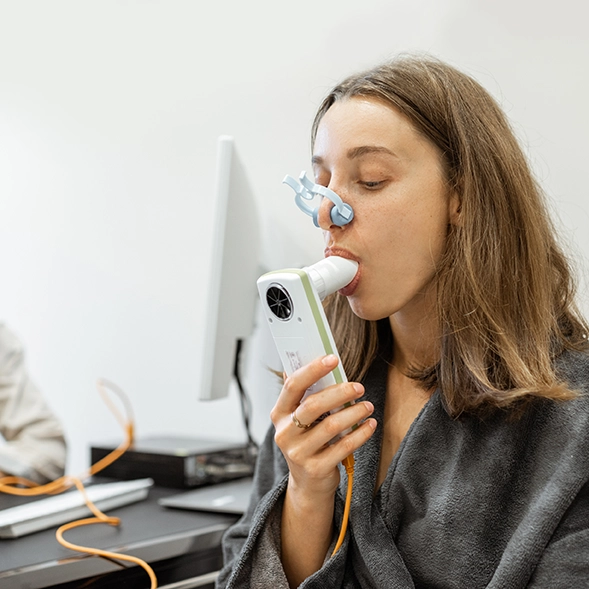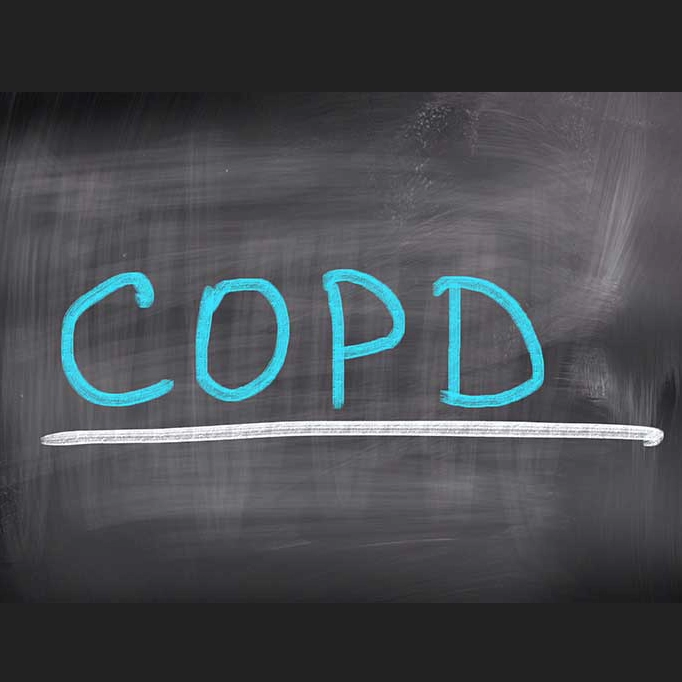Speaker: Marc Miravitlles
Personalizing the treatment of chronic obstructive pulmonary disease (COPD) involves identifying which patients will respond best to specific medications. Patients may respond differently to bronchodilators, such as beta-2 agonists and anticholinergics. While clinical trials show that most patients benefit from both types of bronchodilators similarly, some individuals may respond exclusively to one type over the other. Both bronchodilators are generally safe and can be combined without significant side effects in clinical settings. However, personalized medicine seeks to identify the most effective treatment for individual patients rather than relying on average outcomes from clinical trials. For instance, while inhaled corticosteroids have been shown to reduce exacerbations in COPD patients, as demonstrated in the Informing the Pathway of COPD Treatment (IMPACT) trial, the benefit is not uniform across all patients. Clinical data indicate that while some patients, known as hyper-responders, experience significant benefits from inhaled corticosteroids, others may have minimal or even adverse responses. The lower response is due to reduced improvements in lung function and exacerbation rates compared to typical responders. Identifying these patients is crucial to avoid unnecessary treatment and potential side effects. Eosinophil count has been identified as a useful marker in predicting response to inhaled corticosteroids. Higher eosinophil levels are associated with better outcomes, whereas low eosinophil counts suggest that the treatment may be ineffective or even harmful beyond concerns such as pneumonia.
Grace Oscullo's recent study on patients with severe COPD and bronchiectasis highlights a crucial aspect of treatment. In clinical trials involving corticosteroids, bronchiectasis was an exclusion criterion, meaning these patients were not represented. However, in clinical practice, many patients with severe COPD develop bronchiectasis and experience frequent bacterial exacerbations and pneumonia. Some clinicians have responded to this by increasing the dose of inhaled steroids when patients do not initially show improvement. This approach, however, can be counterproductive. For patients with eosinophil counts above 300, inhaled steroids are effective and lead to a significant reduction in exacerbations. Conversely, in patients with eosinophil counts below 100, inhaled steroids can be harmful, increasing the frequency of exacerbations rather than alleviating them. This adverse effect is attributed to the impact of inhaled steroids on bacterial flora, reducing microbial diversity and increasing the abundance of bacteria associated with exacerbations. Consequently, while inhaled steroids are beneficial and safe for patients with high eosinophil counts, they pose significant risks to those with low eosinophil counts.
Neutrophilic COPD presents a different scenario from eosinophilic COPD. The majority of COPD patients, about 70%, are less likely to have overlapping characteristics between eosinophilic and bacterial infections. Patients with higher eosinophilic counts are less likely to experience bacterial infections in the lower airways and vice versa. Those with more bacterial infections are generally less eosinophilic. Identification of these endotypes or phenotypes allows for targeted therapy. For neutrophilic COPD, alternative strategies, such as long-term antibiotic use, have been explored. For instance, the PULSE study, conducted around 14 years ago, investigated the effects of administering moxifloxacin for five days each month over a year. This approach significantly reduced exacerbations among responders, particularly those with purulent or mucopurulent sputum and higher infective, neutrophilic characteristics. However, the study found that responders experienced a reduction in exacerbations by 30% to 45%. It is important to note that long-term use of quinolones is not recommended due to potential side effects and the risk of resistance. The example illustrates the concept of responders versus non-responders rather than advocating for systematic long-term quinolone treatment.
One study conducted by a group in London reported negative results regarding doxycycline and tetracyclines. However, in patients with neutrophilic or non-eosinophilic COPD, chronic use of doxycycline showed a significant reduction in exacerbations. This indicates that while not all patients may benefit, there are responders in the neutrophilic COPD subgroup. Macrolides, particularly azithromycin, have demonstrated more widely acknowledged effects. A small study involving 30 patients with neutrophilic COPD showed a reduction in neutrophilic inflammation and a 63% decrease in exacerbations with azithromycin. Although this study's p-value was insignificant due to the small sample size, it highlights the potential benefit of macrolides. Subsequent larger studies, such as the MACRO trial in the U.S., confirmed a 27% reduction in exacerbations. However, the study's broad inclusion criteria, including patients on oxygen therapy, made it less ideal for identifying responders. Subgroup analysis revealed that macrolides were ineffective in active smokers, emphasizing the importance of identifying responders. The key Columbus trial further refined the understanding of macrolides' effectiveness, showing a 42% reduction in exacerbations in patients who had experienced at least three antibiotic-treated exacerbations in the past year. This trial supports using macrolides in patients with frequent exacerbations despite optimized therapy.
Roflumilast, another medication, has shown effectiveness primarily in patients with chronic cough and sputum rather than those with pure emphysema. It was also more effective in patients hospitalized in the previous year. Mucolytics and antioxidants, such as N-acetylcysteine at high doses, have demonstrated efficacy in high-risk patients, defined by GOLD criteria as having at least two moderate exacerbations or one severe exacerbation in the previous year. These drugs significantly reduced exacerbations, particularly in GOLD-2 patients. This effect was particularly notable in GOLD-2 patients in the PANTHEON trial, although they were excluded from the most recent GOLD exacerbation management algorithm. They remain included in guidelines from other organizations, such as the European Respiratory Society (ERS)/American Thoracic Society (ATS), Indian, Canadian, and Spanish guidelines.
In the near future, biologics for COPD, such as Benralizumab, are becoming available. Early phase three studies, i.e., GALATHEA and TERRANOVA, have shown that Benralizumab is effective, with an estimated risk reduction of up to 35% in some patients. However, this benefit applies to only about 10% of the study population, and refining the criteria could identify a subset with a 41% risk reduction, but this is only 6% of the population. This highlights that these treatments are very effective for a small fraction of COPD patients due to strict trial inclusion criteria. Similarly, the Dupilumab study observed a reduction of approximately 30% in severe patients on triple therapy. Although this result is not as high as 70% or 90%, it is still significant for patients with T2 inflammation and chronic bronchitis. The foundation of COPD treatment remains bronchodilation. While not everyone responds to beta-2 agonists or anticholinergics, the risk of side effects is minimal. LABAs (long-acting beta2 agonists) or LAMAs (long-acting muscarinic antogonists) combinations can be used, particularly for those who continue to experience exacerbations despite LABA/LAMA therapy. It is important to identify responders to avoid unnecessary treatments. Some symptoms and conditions may not be alleviated with medication but by removing the offending drug.
European Respiratory Society Congress (ERS) 2024, 7–11 September, Vienna, Austria.



